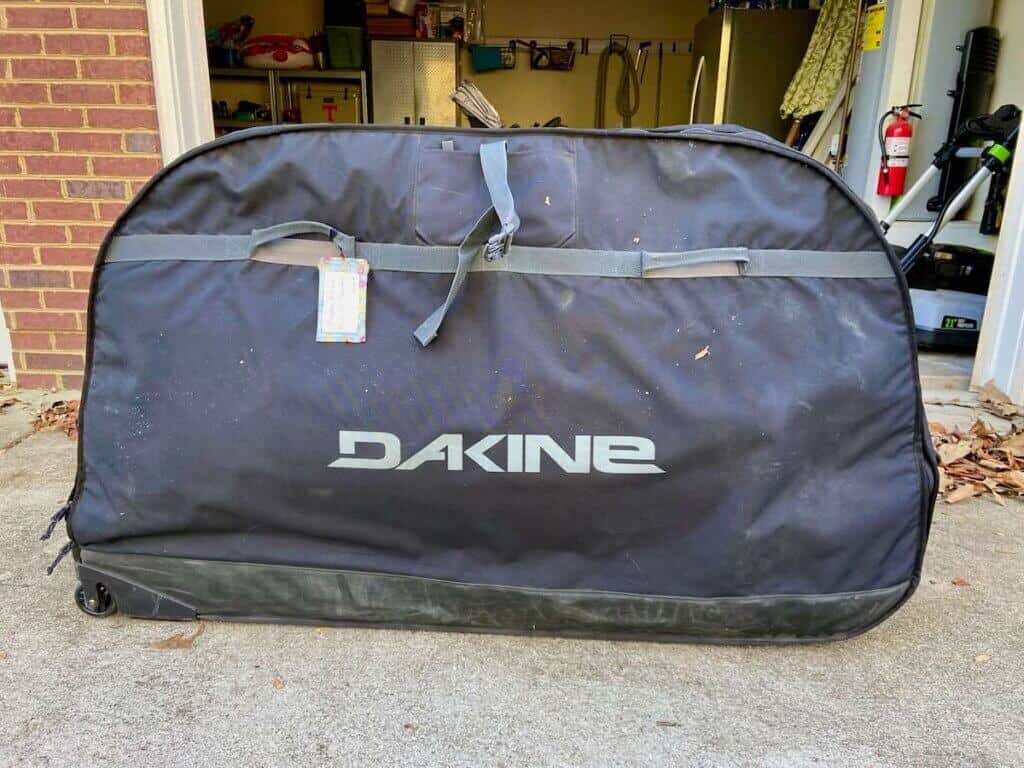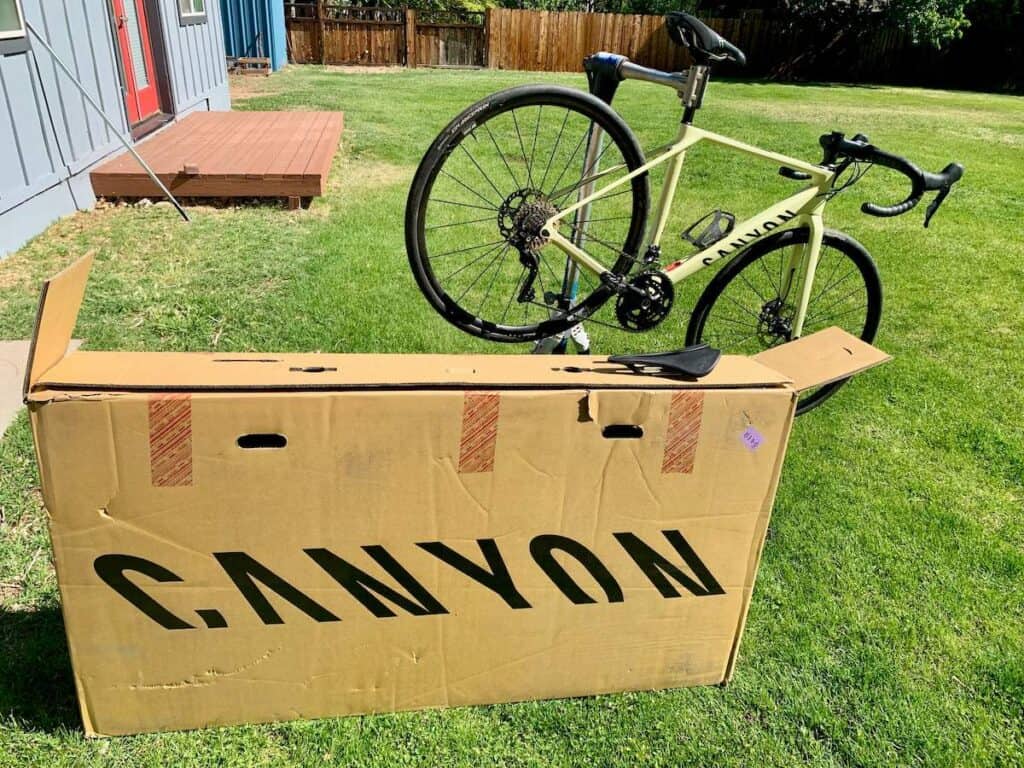How to Ship A Bike: A Comprehensive Guide
Discover our best tips for shipping a bike including how to calculate costs, best shipping services to use, how to pack a bike, & more!
Looking for tips on how to ship a bike? Whether you’re an avid cyclist selling your old bike, a dedicated athlete training for a triathlon across the country, or you’re simply moving and want to take your two-wheeled companion with you, knowing how to ship a bike properly can save you a lot of trouble and money.
But how do you do it?
Shipping a bike doesn’t have to be a headache or cost a fortune. I’ve shipped bikes and wheels numerous times and if you do it right, it’s actually quite an easy process and in this post.
It may sound intimidating at first, but this post with guide you step-by-step through choosing the right carrier, how to disassemble your bike, tips for packing it, and more. My aim is to ensure that your bike arrives safely at its destination in the same condition it left, ready for your next adventure.
Let’s dive in!
FAQs about how to ship a bike
Shipping a bicycle may sound intimidating, but it doesn’t have to be. Here are some Frequently Asked Questions about shipping a bike:

Need Help Planning Your Trip?
New to bikepacking? I’d love to help you plan your first (or next) overnight trip! Click the link below to set up a Q & A session.
Bike shipping services
Shipping your bike, whether it’s a cherished classic or a high-tech racing machine, can be intimidating.
The process of disassembling, packing, and ensuring your bike’s safe arrival at its destination might seem overwhelming.
Thankfully, several dedicated bike shipping services can simplify this process, offering specialized care for your two-wheeled companion.
Here are the top bike shipping services available:
Read next: Prefer to fly with your bike instead? Check out my guide to Flying With a Bike & the Best Airlines to Choose
BikeFlights
BikeFlights is my top choice – and a popular option among many other cyclists – for shipping bicycles and bike parts like wheels.
They offer both domestic and international shipping and they provide a wide array of services, including bike box supplies, door-to-door pickup and delivery, and insurance coverage.
What sets BikeFlights apart is their “Best Way Guarantee,” which promises to provide the best rates, delivery times, and customer service.

ShipBikes
ShipBikes is another bike-shipping service that offers an easy and affordable way to ship your bike across the U.S. and internationally.
They provide custom bike boxes and packing materials, ensuring your bike remains safe during transit. The downside is that you must use one of their Ship Bike containers.
I also find that the user experience on Ship Bike’s website is far inferior to BikeFlights.
UPS/FedEx
FedEx and UPS may not be bike-specific services, but they offer reliable shipping options for bikes. Both offer a variety of shipping speeds, from ground to express delivery, and provide detailed tracking information.
Be sure to check their guidelines for packing and shipping bikes and consider insuring your bike for its full value.
Luggage Forward
Luggage Forward is a boutique luggage shipping service that accepts bicycles. Their service offers a seamless, door-to-door delivery experience.
They offer a unique “on-time guarantee,” promising a double-your-money-back guarantee if your bike doesn’t arrive on time.
They also handle all customs documentation for international shipping, reducing hassle for you.
TriBike Transport
For those attending triathlons, Ironman’s, and other bike events, TriBike Transport offers a premium service where they disassemble, pack, and ship your bike for you and even reassemble your bike at the event location.
They cater specifically to athletes, ensuring your bike is ready when you need it.
The downside is that they only cover specific events, so browse their listings to see if your event is on there.
Tip: When choosing a shipping service, consider factors like cost, shipping time, the convenience of pickup and delivery, and additional services such as provided packing materials or insurance. The safety and timely arrival of your bike is paramount, so choose a service that you trust will handle your bike with care!

Fees for Shipping a Bike
The cost to ship a bike will vary depending on the shipping service you use as well as a few other factors including:
CHEAPEST WAY TO SHIP A BIKE
According to BikeFlights, you will get the best shipping rates when your shipment length does not exceed 48 inches, height does not exceed 30 inches, and total shipment size is less than or equal to 130 inches (total shipment size = Length + 2x Width + 2x Height)
You’ll also get the best rate when your shipment package is under 50 pounds.
Choosing a shipping container
There are a number of containers a bike can be shipped in. They can be shipped in a cardboard bike box, a soft bike travel bag, or a hardshell case.
Cardboard bike box
Cardboard bike boxes are often the most economical choice and can be sourced for free or a small fee from local bike shops. They are surprisingly durable, and with proper internal packing, they provide good protection for your bike. They’ll be the cheapest to ship since they are lightweight and have the smallest dimensions.
Bike boxes are a great option if you’re selling your bike or doing a one-way trip where you can pick up another bike box at the end.

Soft bike bags
Soft bike bags offer a mid-range option between cardboard boxes and hardshell cases.
They’re lighter and more compact than hardshell cases, making them easier to transport, but they also provide more protection than a cardboard box.
Read next: I’ve traveled extensively with my Dakine Bike Roller Bag. Read my full review here.

Hardshell cases
Hardshell cases offer the highest level of protection. They are more expensive (both to buy and ship due to their weight), but if you plan to ship your bike frequently or it’s a high-value item, this could be a worthwhile investment.
Hardshell cases are designed to withstand harsh handling and protect your bike from impact damage.
How to pack a bike for shipping
Packing your bike well is super important if you want your bike to arrive at its destination damage-free. You can take your bike to a local bike shop and they will pack it up for you for a fee, or you can do it yourself.
Here’s a simple guide to packing a bike for shipping:
1. Gather Your Tools and Materials
Before you begin the process of disassembling and preparing your bike for shipping, it’s essential to gather all the necessary tools and packing materials.
Here’s what you’ll need:
2. Clean Your Bike
A clean bike is easier to work with and less likely to cause problems during shipping or reassembly. Plus, taking the time to clean your bike can give you an opportunity to inspect it for any damage or necessary maintenance before it’s shipped.
3. Disassemble Your Bike
To safely fit your bike into its shipping box or container and minimize the risk of damage, you’ll need to disassemble certain parts.
The specific steps may vary depending on the type of bike, but generally, you’ll need to:
4. Add protection
To prevent scratches, dings, or more severe damage during transit, you’ll want to add padding to protect the bike parts.
Use bubble wrap, foam, or other protective materials to wrap the frame and parts, focusing particularly on protruding parts and sensitive areas like derailleurs.
I like to use the foam frame noodles that come on most new bikes. You can get these at any bike shop.

5. Take photos
It’s always a good idea to take photos of your bike after packing it up so you have proof that your bike was packed properly in case it gets damaged during transit.
6. Label your box or bag
Once the bike is packed, seal the box or bag securely with tape or zip ties on the zippers. Write “Fragile” and “This Side Up” on the outside of the box to alert handlers to the need for careful handling.
I also like to include my address and the recipient’s address on a luggage tag.
7. Ship it!
Once your bike is all packed up, it’s time to send it on its way! Depending on what carrier you choose, you may need to bring it to a shop or shipping facility or most carriers will pick it up right from your doorstep.
Final thoughts
Shipping a bike may seem like a daunting task, but it’s really not that hard or scary. With good preparation and the right knowledge, it can be a smooth, worry-free process.
Just be sure to choose a good shipping container and properly disassemble and pad your bike to avoid damage. Also, get the extra insurance!
Happy riding!
RELATED POSTS
Looking for more tips and resources on how to transport your bike? Check out these related blog posts:
What questions do you still have about shipping a bike? Have you used BikeFlights before? What additional tips do you have? Leave your comment or advice below!







Before anything else, it is crucial that you acquire the correct box measurement for your bicycle. Whether you want to ship a road bike or a large mountain bike, box size is a huge consideration.
Good point!